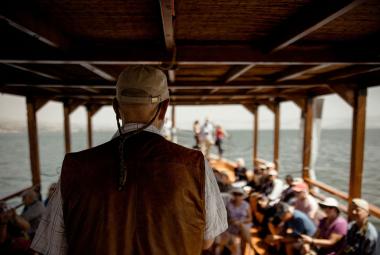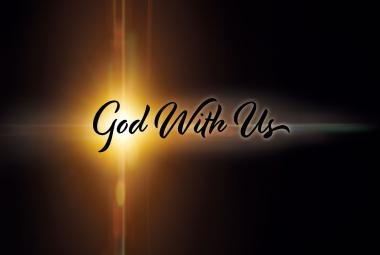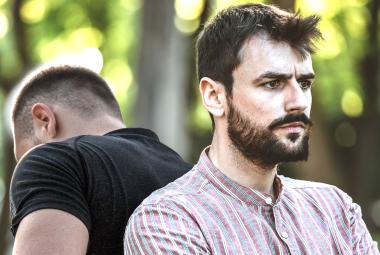And there were in the same country shepherds abiding in the field, keeping watch over their flock by night.
Luke 2:8
The book of Ruth, a traditional reading at harvest time during the Feast of Weeks (Shavuot), is a book of only four brief chapters that is both a classic love story and also an essential book of prophecy. One cannot understand Revelation Chapter 5 without it. It even has implications for our Christmas season, which is one of the reasons for providing a precis in this issue.
Background
The family of Elimelech, due to a local famine, leaves its home in Bethlehem and immigrates to Moab. The two sons marry local girls, but the father and the two sons subsequently pass away, leaving his wife, Naomi, and her two daughters-in-laws destitute. Hearing that things are now better back home, Naomi decides to return to her native Bethlehem. She urges the two young girls to remain in their homeland and begin new lives, but Ruth refuses and insists on accompanying Naomi.1
The Law of Gleaning
One of the values of this book is to highlight the operation of the laws of ancient Israel. As a landowner, you were permitted to reap on one pass only: what was missed, or left behind, was available to be gleaned by the widows or the destitute.2
Naomi and Ruth are, of course, in that situation, and Ruth, in her support of the household, goes out to glean after the reapers and happens3 onto the field of Boaz, one of the wealthy landowners and the hero of our story. Boaz arranges for his reapers to drop handfuls on purpose to assure Ruth an abundant gathering. When Naomi learns of Ruth's good fortune, she is especially delighted since it turns out that Boaz is a kinsman of the family, and that leads to the opportunity that is the crux of the tale.
To properly understand what follows, it is necessary to be familiar with several other laws operative from the Torah.
The Law of Redemption
When property is sold in our culture, title is usually passed in fee simple, in perpetuity to the buyer. However, Israel's land was granted, in the days of Joshua, to the tribes to be retained within the family. (That's one of the reasons genealogies were so important.)
When someone sold a property-to pay debts, or whatever-the transaction was what we would view as a lease: there were provisions for the land to eventually return to the family.4 A title deed included the terms that a kinsman of the family could perform to redeem the property to the family.5
The Law of Levirate Marriage
There was also an unusual procedure to assure the continuation of a family in the event of the death of a husband without issue. If a widow had no son, she could request the next of kin to take her and raise children to continue the family bloodline.6
It is from this background that we understand Naomi's opportunity in Ruth Chapter 3. She realizes that Boaz is a kinsman; therefore, there was an opportunity to regain the family properties lost by her deceased husband 10 years earlier and also a chance for Ruth to have a new life. Naomi instructs Ruth on how to proceed.
The Threshing Floor
The harvest included winnowing the wheat at a threshing floor, a parcel of ground where there was a prevailing wind. The grain was tossed into the air and the grain would fall downwind a small distance; the chaff, being lighter, would be carried further downwind. When done properly, two piles would result: the furthest would be burned as trash; the closer one would be bagged for the marketplace.
The harvest was, of course, also a time for celebration, and the evenings were accompanied by festivities for having made payroll another season, etc. After the celebration, the owners typically would sleep near the grain to preclude theft. Ruth is instructed by Naomi to approach Boaz privately at the threshing floor. What follows is widely misunderstood by the uninitiated reader.
The Request
Ruth approaches Boaz while he is sleeping and requests him to spread his skirt over her as he is a near kinsman. This is not the kind of proposition many people assume it to be.
The shul (skirt), or hem, was the emblem of rank or authority in Israel, much like the stripes on the sleeve of a naval officer or airline pilot in our culture. (This insight is essential to really understand David's cutting Saul's hem,7 or why the woman with the issue of blood touched Christs hem,8 etc.)
Ruth was asking Boaz to put the authority of his house over her. She is invoking her right under the laws of Israel for him to take her to wife. Boaz was delighted to accommodate her, but there remained an obstacle to be overcome.
A Nearer Kinsman?
It seems that there is a nearer kinsman who would have to first step aside for Boaz to assume his role. This is a cloud over the otherwise joyous proceedings. Boaz takes on the task of confronting this nearer kinsman, in front of the city council, to force the issue.
When a widow requested the next of kin to perform the role of the goel, or kinsman-redeemer, he wasn't forced to. In fact, there were three conditions to be met:
- He had to be qualified as a kinsman;
- He had to be able to perform;
- He had to be willing.
There were two issues at stake: the redeeming of the land for Naomi and the taking of Ruth to wife. As far as the land is concerned, the man appears to be willing. But for some undisclosed reason, he is unable to perform where Ruth is concerned. That clears the way for our hero, Boaz, to fulfill his role as the goel.
The giving of the shoe needs an explanation. If the nearer kinsman declined the responsibility, he would have to yield one of his shoes and could also suffer the indignity of being spit upon. When he declined, he performed the traditional gesture by yielding his shoe to Boaz. The shoe was intended to be a symbol of disgrace, but to Boaz it was a marriage license!
(It may seem remarkable that Boaz, a wealthy Jew, would take a Gentile to wife. Remember who his mother was: Rahab, the harlot of Jericho.9 Both Rahab and Ruth are in Christs genealogy.10)
A Closer Look
This elegant love story is a classic in literature, and it also gives us some interesting insights into the life of ancient Israel.
But if we look more closely, we will discover that it is much more than that. The plan of God appears to be hidden among its colorful symbols and roles. The Bible frequently deals in symbols, models, or types.11 As we examine the role of Boaz as the goel, or kinsman-redeemer, we can easily see how he, in some ways, pre-figures our own kinsman-redeemer, Jesus Christ. Through his act of redemption, Boaz returns Naomi (Israel) to her land, and also takes Ruth (a Gentile) as his bride. This suggests a parallel with the Church as the Gentile bride of Christ.
The parallels between Boaz, Naomi, and Ruth with Christ, Israel, and the Church have been widely recognized, and it is remarkable to notice how many additional details of the story are consistent with this viewpoint.
The Unnamed Servant
Who first introduces Boaz to Ruth? An unnamed servant.12 This is suggestive of the role of the Holy Spirit, and it is interesting that in every example that the Holy Spirit is viewed in such a role, He is always the unnamed servant. In Genesis 24, Abraham, as the Father, sent his eldest servant to gather a bride for his son Isaac. This unnamed servant seems to be mentioned elsewhere13 as Eliezer, which means Comforter. Why does the Holy Spirit always appear as the unnamed servant? Because Jesus said He would never testify of Himself.14
It is interesting that, no matter how much Boaz wanted Ruth, as a gentleman there was nothing he could do until she declared herself. It was her move. No matter how much Jesus loves us, He awaits our response. How about you? Have you asked your Goel to do His kinsman-redeemer part for you?
The Nearer Kinsman
What does the nearer kinsman symbolize? Most scholars view him as the Law. What the Law could not do, Jesus has already done for us. It is also significant that at the confrontation with the nearer kinsman, it was Ruth's position to confront the nearer kinsman; however, Boaz stood in Ruth's place and took the entire burden upon himself.
This Christmas season we will, of course, think of those shepherds who were visited by the angels announcing the birth of the Son of David in Bethlehem. It is interesting to reflect on the possibility that these shepherds were tending their flocks in the very fields that had belonged to Boaz and Ruth so long before.
We note that this love story climaxes with Boaz purchasing his (Gentile) bride.15 Jesus also has purchased us: it was with His blood on a wooden cross two thousand years ago. May His richest blessings attend you and yours during this special holiday season!
Appendix: The Strange Toast
As they celebrated the wedding of Ruth and Boaz at the end of Ruth Chapter 4, we encounter a rather strange remark in verse 12: May your house be like Perez If you understand the sordid tale of Judah and Tamar,16 which leads to the illegitimate birth of Perez, you might be inclined to think, Same to you, fella! What kind of a toast or blessing is that?
To understand what lies behind this unusual prophecy, we need to remember that in the case of an illegitimate son, there could be no inheritance for ten generations.17 Appended to the Book of Ruth is the genealogy from Perez, and ten generations leads us to David, anointed King over Israel!
When Israel clamored for a king and Samuel anointed Saul,18 we often get the impression that David was an afterthought when Saul didn't work out. Not so. Here, as early as the time of the Judges, is a prophecy that David was Gods destined choice for King. Perhaps that is why Samuel had to go to the tribe of Benjamin, rather than the royal tribe of Judah19 for his selection: the curse on Perez's line hadn't run out yet.
(See here for our article from the May 2004 issue of Personal UPDATE for a hidden genealogy of David embedded-in chronological order-within the Hebrew text of Genesis 38!)
Notes:
- A classic commitment: Ruth 1:16, 17.
- Leviticus 19:9-10; 23:22.
- The rabbis point out that coincidence is not a kosher word.
- Leviticus 25:23-34.
- Jeremiah 32:6-27; cf. Revelation Chapter 5.
- Deuteronomy 25:5-10.
- 1 Samuel 24:1-22.
- Matthew 9:20-21; 14:36; Mark 5:31; 6:56; Luke 8:44.
- Matthew 1:5.
- Matthew 1:5.
- Hosea 12:10.
- Ruth 2:5.
- Genesis 15:2.
- John 16:13.
- Ruth 4:10.
- Genesis 38:6-29.
- Deuteronomy 23:2.
- 1 Samuel 9:15-10:1.
- Genesis 49:10.





